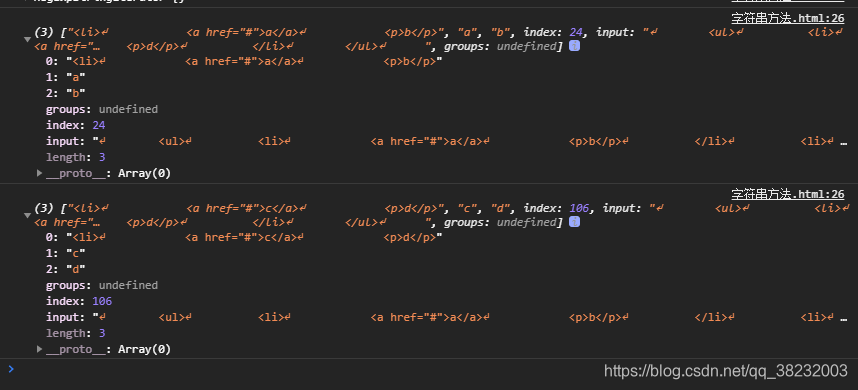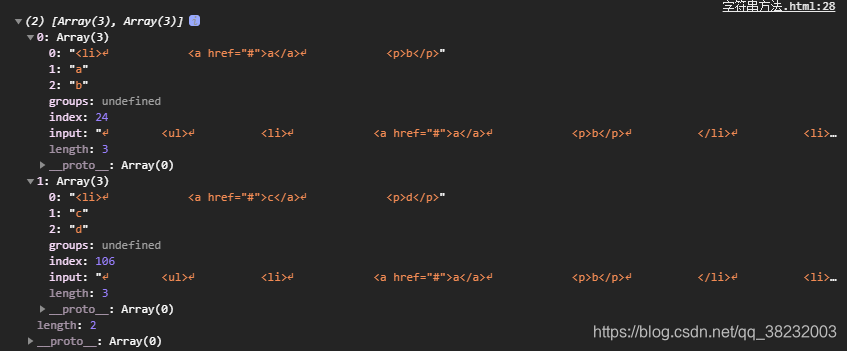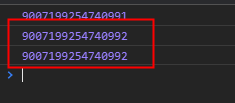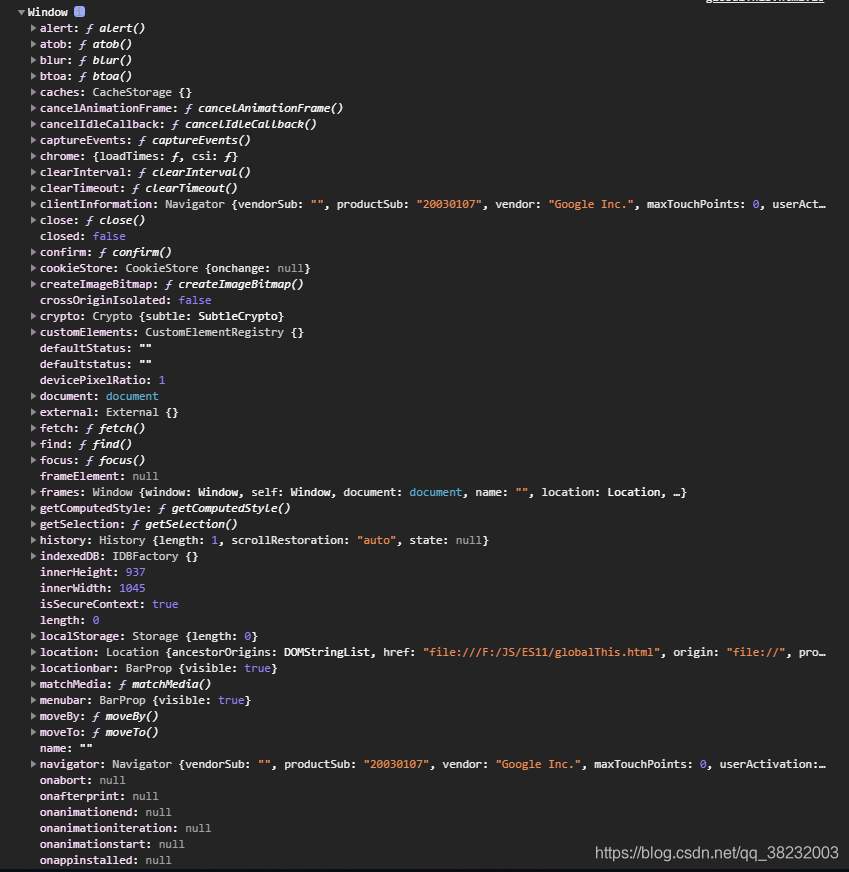ES11
私有属性
私有属性只允许在类的内部调用,不允许在
在类中,使用#变量名定义私有属性
class Person {
name;
#age;
#weight;
constructor(name, age, weight) {
this.name = name;
this.#age = age;
this.#weight = weight;
}
intro() {
console.log(this.name);
console.log(this.#age);
console.log(this.#weight);
}
}
const gril = new Person('rose', 88, '100kg');
console.log(gril.name);
console.log(gril.#age);
console.log(gril.#weight);

通过类内部方法调用私有属性
class Person {
name;
#age;
#weight;
constructor(name, age, weight) {
this.name = name;
this.#age = age;
this.#weight = weight;
}
intro() {
console.log(this.name);
console.log(this.#age);
console.log(this.#weight);
}
}
const gril = new Person('rose', 88, '100kg');
gril.intro();

Promise.allSettled
进行批量异步任务的执行,需要获得所有异步任务的结果则使用allSettled,需要全部异步任务都执行成功则使用all。
allSettled
Promise.allSettled接受一个Promise对象的数组;返回的也是Promise对象,永远是成功的状态,成功的值是数组里面的每一个Promise对象的状态和结果。
const p1 = new Promise((resolve, reject) => {
setTimeout(() => {
console.log(1);
resolve('goods 1');
}, 1000);
});
const p2 = new Promise((resolve, reject) => {
setTimeout(() => {
console.log(1);
resolve('goods 2');
}, 1000);
});
const p3 = new Promise((resolve, reject) => {
setTimeout(() => {
console.log(1);
reject('error');
}, 1000);
});
const result = Promise.allSettled([p1, p2, p3]);
console.log(result);

all
Promise.all 的结果为每一个Promise对象都成功就为成功,只要有一个失败就返回失败。
const p1 = new Promise((resolve, reject) => {
setTimeout(() => {
console.log(1);
resolve('goods 1');
}, 1000);
});
const p2 = new Promise((resolve, reject) => {
setTimeout(() => {
console.log(1);
resolve('goods 2');
}, 1000);
});
const p3 = new Promise((resolve, reject) => {
setTimeout(() => {
console.log(1);
reject('error');
}, 1000);
});
// const result = Promise.allSettled([p1, p2, p3]);
const result = Promise.all([p1, p2, p3]);
console.log(result);

String.prototype.matchAll
matchAll()批量提取正则匹配的字符
matchAll()得到的是一个可迭代对象
let str = `
<ul>
<li>
<a href="#">a</a>
<p>b</p>
</li>
<li>
<a href="#">c</a>
<p>d</p>
</li>
</ul>
`;
const reg = /<li>.*?<a href="#">(.*?)<\/a>.*?<p>(.*?)<\/p>/gs;
const result = str.matchAll(reg);
console.log(result);

使用for of 遍历
for (let v of result) {
console.log(v);
}

使用扩展运算符
console.log([...result]);

可选链操作符
在获取对象的属性之前需要做层层判断是否存在,不然属性不存在时会报错。
使用逻辑与实现判断 &&:
const main = config => {
const dbHost = config && config.db && config.db.host;
console.log(dbHost);
};
main({
db: { host: '192.168.1.100', username: 'root' },
cache: { host: '192.168.1.200', username: 'admin' }
});
使用可选链操作符 ?.
const main = config => {
const dbHost = config?.db?.host;
console.log(dbHost);
};
main({
db: { host: '192.168.1.100', username: 'root' },
cache: { host: '192.168.1.200', username: 'admin' }
});
动态import
es6的写法为静态导入
import * as m1 from './hello';
动态导入,实现按需导入(懒加载),提高加载的效率。
案例实现动态导入:点击按钮,提示hello
html文件
<!DOCTYPE html>
<html lang="en">
<head>
<meta charset="UTF-8" />
<meta name="viewport" content="width=device-width, initial-scale=1.0" />
<title>Document</title>
</head>
<body>
<button id="btn">click</button>
<script src="./app.js" type="module"></script>
</body>
</html>
app.js
动态导入hello模块进行使用,import(路径)的得到的是一个Promise对象,使用then获取成功的模块。
const btn = document.querySelector('#btn');
btn.onclick = () => {
import('./hello.js').then(module => {
module.hello();
});
};
hello.js
export const hello = () => {
alert('hello');
};
BigInt类型
ES11 引入了新的数据类型 BigInt类型 大整型,进行更大的数值运算。
不能使用浮点型
使用方法:
1.在普通的整型数后加n
const n = 666n;
console.log(n, typeof n);

2.使用BigInt()函数
let n = 666;
console.log(BigInt(n)); // 666n
应用场景
大数值运算
Number.MAX_SAFE_INTEGER 表示最大安全整数 9007199254740991
let max = Number.MAX_SAFE_INTEGER;
console.log(max);
console.log(max + 1);
console.log(max + 2);
js代码 当到达最大安全整数时,再相加就不会成功

使用BigInt进行转换后,即可相加
注意:大整型只能和大整型进行运算
console.log(BigInt(max));
console.log(BigInt(max) + BigInt(1));
console.log(BigInt(max) + BigInt(2));

绝对全局对象globalThis
ES11 引入了特殊变量 globalThis,字面意思为全局的this
globalThis始终指向全局对象(无论运行环境node、浏览器等)
作用:忽略环境,直接使用globalThis 获得全局对象。
console.log(globalThis);
浏览器指向 window对象
浏览器 全局对象为 Window

node环境指向 global
node环境的全局对象为 global






 本文介绍了ES11的几大新特性,包括私有属性的定义与使用,Promise.allSettled与Promise.all的区别,String.prototype.matchAll方法的批量匹配功能,可选链操作符的便利性,动态import实现按需加载,以及BigInt类型用于大整数运算,最后讲解了全局对象globalThis的作用及其在不同环境下的指向。
本文介绍了ES11的几大新特性,包括私有属性的定义与使用,Promise.allSettled与Promise.all的区别,String.prototype.matchAll方法的批量匹配功能,可选链操作符的便利性,动态import实现按需加载,以及BigInt类型用于大整数运算,最后讲解了全局对象globalThis的作用及其在不同环境下的指向。
















 585
585

 被折叠的 条评论
为什么被折叠?
被折叠的 条评论
为什么被折叠?








